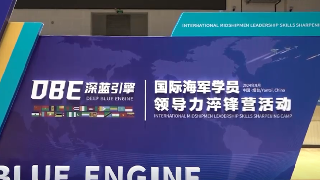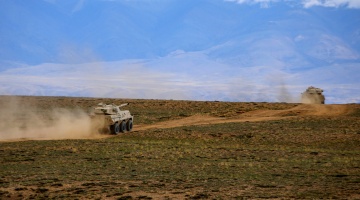By Wu Minwen
Admiral Akira Saito, Chief of Staff of the Japan Maritime Self-Defence Force (JMSDF), announced on September 3 the Force's largest restructuring plan since its establishment 70 years ago. After what Japan has done in recent years – significantly increasing its annual defense expenditure, developing offensive weaponry and combat capabilities, and enhancing the interoperability with the US Force Japan (USFJ) in their command systems to reinforce its regional and global military profile, this represents the latest development on its efforts to become a political and military power.
The JMSDF currently consists of the Self-Defense Fleet, five Escort Divisions, and various units such as those of training, communication and logistics. The Self-Defense Fleet as the pillar consists of eight combat groups, including the Fleet Escort Force, the Fleet Air Force, the Fleet Submarine Force, the Mine Warfare Force, and the Fleet Intelligence Command.
The latest restructuring focuses on the Self-Defense Fleet's Fleet Escort Force and Mine Warfare Force, as well as the five Escort Divisions. According to the reorganization plan, the Fleet Escort Force, Mine Warfare Force and Minesweeper Divisions under the five Escort Divisions will be reorganized into a Fleet Surface Force. The reorganization is mainly reflected in three aspects.
First, the current four Escort Flotillas will be regrouped into three Surface Battle Groups, each including a helicopter aircraft carrier (Hyuga-class or Izumo-class) and other vessels in larger numbers than before to ensure efficient rotation during combat, training, and maintenance. Based on the helicopter aircraft carrier, the three new Surface Battle Groups will be fitted with more vessels both in terms of types and numbers, enabling comprehensive and coordinated operation on a higher level.
Second, the existing Mine Warfare Force and the mine-sweeping, transport and amphibious ships of Escort Divisions will be merged to form the Amphibious Mine Warfare Group, which will be armed with a helicopter aircraft carrier and some surface vessels for better command and combat capabilities. The Amphibious Mine Warfare Group not only realizes the consolidation of the Mine Warfare Force of the Self-Defense Fleet and the minesweeper, transport and amphibious units under the Escort Divisions, but also got a helicopter carrier like the three Surface Battle Groups, which enhanced its command capability and even enabled it to serve as a light carrier battle group.
Third, a new Patrol Defense Group will be established, mainly comprising current forces responsible for patrol and surveillance.
The 70-year JMSDF's largest restructuring is planned to be completed before March 2026, after which its surface battle force will mainly consist of three Surface Battle Groups, one Amphibious Mine Warfare Group, and one Patrol Defense Group. The integration will strengthen JMSDF's capabilities and facilitate unified command.
The restructuring is also aimed to make up for the US Navy's deficiencies with the strength of the JMSDF. The US has the world's largest navy, but its 11 aircraft carrier groups still fall short of fulfilling its global strategy and achieving global military hegemony. Previously, between the massive, protracted military conflict between Palestine and Israel, and the intense confrontation between the US military and the Houthi armed forces in Yemen, the US had to deploy its Theodore Roosevelt and the Abraham Lincoln carrier strike groups to the Middle East for a long time to cope with regional tension, leaving a carrier blank in the West Pacific. If JMSDF's Hyuga-class or Izumo-class helicopter carriers can be used as light carriers, they will be able to make up the blank and the US military's carrier deficiency to some extent.
JMSDF's reform will promote its integrated command with the US Navy Japan. It can be inferred that the restructuring is just a first step. Next, the JGSDF and JASDF may go through a similar process. Only when the USFJ is reconstituted as a joint force headquarters (JFHQ), Japan's Joint Operations Command (JJOC) is established on the command level, and the JGSDF, JMSDF and JASDF complete their restructuring on the operating level, will the JSDF and USFJ be fully integrated both in combat forces and in command and control system.
(The author is at the College of Information and Communication, National University of Defense Technology.)
Editor's note: Originally published on zqb.cyol.com, this article is translated from Chinese into English and edited by the China Military Online. The information and opinions in this article do not necessarily reflect the views of jmhuiquan.com.









